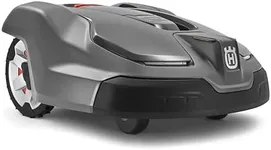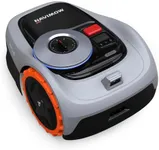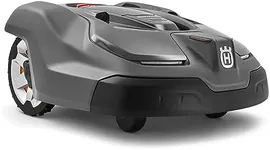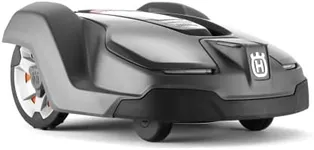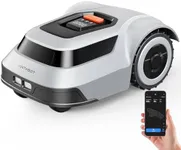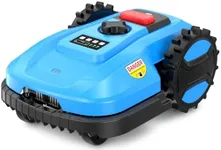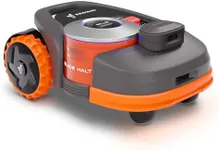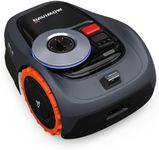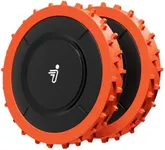Buying Guide for the Best Robotic Lawn Mowers
Choosing the right robotic lawn mower can make maintaining your lawn much easier and more efficient. These devices can save you time and effort, but it's important to select one that fits your specific needs and lawn conditions. When evaluating different models, consider the size of your lawn, the complexity of the terrain, and any additional features that might be beneficial for your situation. Here are some key specifications to consider when choosing a robotic lawn mower.Lawn Size CapacityLawn size capacity refers to the maximum area that the robotic lawn mower can handle. This is important because you want to ensure that the mower can cover your entire lawn without needing frequent recharges. Lawn size capacities are usually divided into small (up to 0.25 acres), medium (0.25 to 0.5 acres), and large (over 0.5 acres). Choose a mower that matches or slightly exceeds the size of your lawn to ensure efficient coverage.
Battery Life and Charging TimeBattery life indicates how long the mower can operate on a single charge, while charging time is how long it takes to recharge the battery. These specs are crucial because they affect how often the mower needs to return to its charging station and how long it will take to resume mowing. Longer battery life and shorter charging times are generally better, especially for larger lawns. If you have a small lawn, a shorter battery life might be sufficient.
Cutting Width and HeightCutting width is the width of the path that the mower cuts in a single pass, and cutting height is the range of heights at which the mower can cut the grass. A wider cutting width means the mower can cover more ground in less time, which is beneficial for larger lawns. Cutting height adjustability is important for maintaining different types of grass and achieving your desired lawn appearance. Choose a mower with a cutting width and height range that suits your lawn size and grass type.
Navigation and Mapping TechnologyNavigation and mapping technology determines how the mower moves around your lawn and avoids obstacles. Advanced models use GPS and sophisticated sensors to create a map of your lawn and navigate efficiently. This is important for ensuring thorough coverage and avoiding collisions with objects. If your lawn has many obstacles or an irregular shape, look for a mower with advanced navigation features.
Slope HandlingSlope handling refers to the mower's ability to operate on inclines. This is important if your lawn has hills or uneven terrain. Mowers are typically rated for different maximum slope percentages, such as 20%, 30%, or more. Choose a mower that can handle the steepest slopes in your yard to ensure it can mow all areas effectively.
Noise LevelNoise level is the amount of sound the mower produces while operating, usually measured in decibels (dB). This is important if you live in a neighborhood with noise restrictions or if you prefer a quieter operation. Lower noise levels are generally more desirable, especially if you plan to run the mower during early mornings or late evenings.
Smart Features and ConnectivitySmart features and connectivity options, such as app control, scheduling, and integration with smart home systems, can enhance the convenience and functionality of your robotic lawn mower. These features allow you to control and monitor the mower remotely, set mowing schedules, and receive notifications. If you value convenience and tech integration, look for a mower with robust smart features.
Safety FeaturesSafety features, such as lift and tilt sensors, obstacle detection, and child locks, are important for preventing accidents and ensuring safe operation. These features help the mower avoid obstacles, stop the blades if the mower is lifted or tilted, and prevent unauthorized use. Prioritize mowers with comprehensive safety features, especially if you have children or pets.
